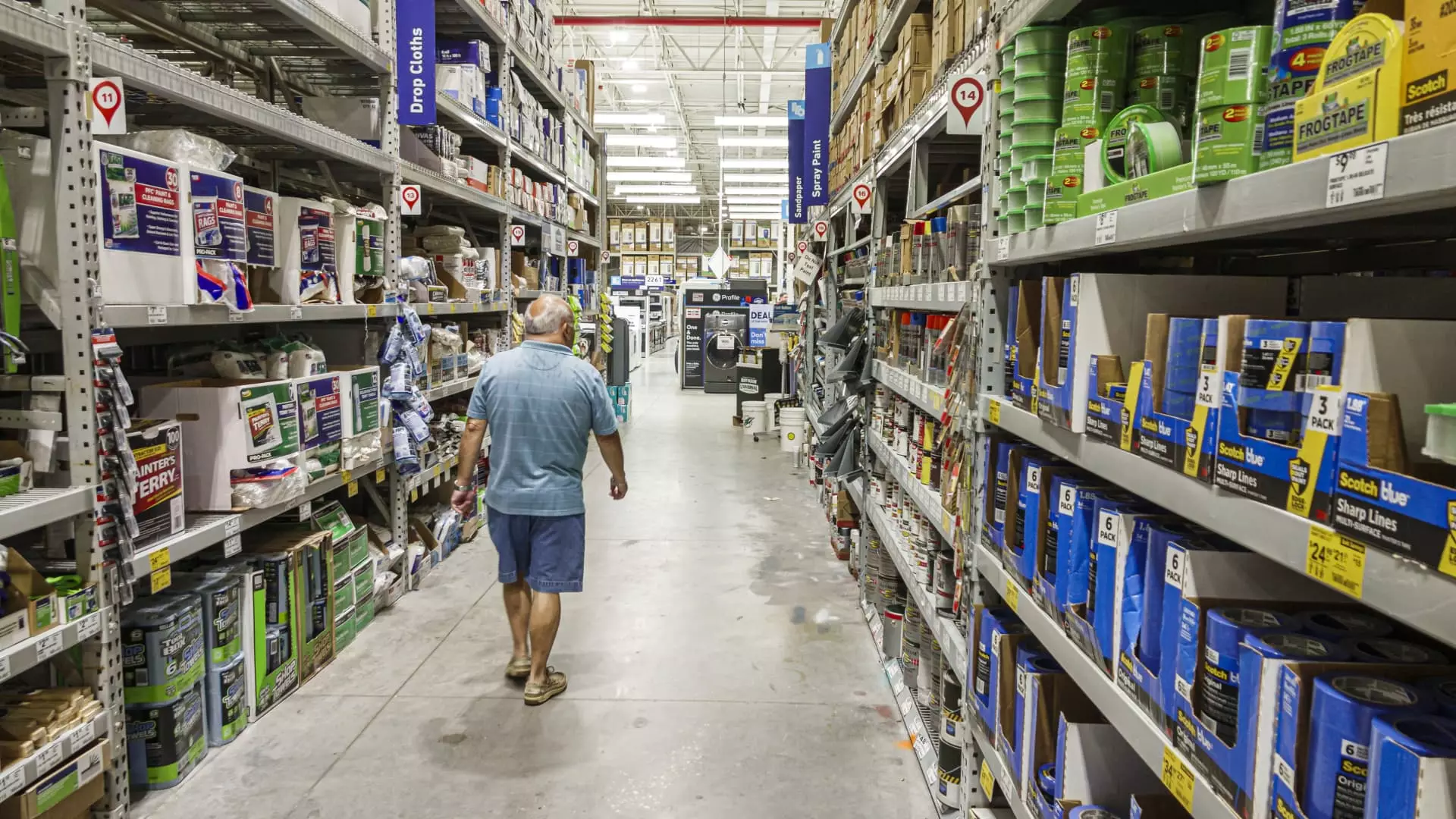The topic of inflation and deflation within the U.S. economy has become increasingly complex, especially as recent developments hint at a gradual easing of inflationary pressures. While specific categories of consumer spending—particularly in goods such as furniture and gasoline—have experienced deflation, the broader economic landscape reflects a nuanced interplay between supply chains, consumer behavior, and policy decisions. This article delves deeper into these dynamics, exploring the causes, implications, and future outlook of inflation and deflation in the economy.
Inflation, the sustained increase in the price level of goods and services, has been a prominent issue over the past few years. Interestingly, recent trends indicate that deflation—the decrease in prices—has become evident in certain consumer sectors following significant disruptions during the Covid-19 pandemic. Economists have noted that deflation is an unusual phenomenon, especially when prevailing inflationary forces still impact other areas of consumer spending. Mark Zandi, the chief economist at Moody’s, remarks that although price reductions in certain goods are being witnessed, aggressive price cuts in broader sectors remain rare.
The pandemic-induced shift in consumer behavior, marked by a surge in spending on physical goods during lockdowns, vastly altered the supply-demand balance. As people were confined to their homes and restricted from activities like travel and dining, there was a disproportionate increase in demand for household goods. Simultaneously, global supply chains faced unprecedented disruptions, delaying product availability and driving prices upward. As supply chains normalize and consumer demand stabilizes, price reductions have naturally occurred in several sectors.
A closer examination of commodities reveals notable trends. The Consumer Price Index (CPI) showcases a decrease in average prices for core goods—those excluding food and energy—by approximately 1% since September 2023. Within this category, specific items have seen significant price declines. For instance, household furnishings, appliances, and tools have experienced falls of 2%, 3%, and 4%, while women’s outerwear and sporting goods prices have dropped by 6% and 2%, respectively.
Vehicles, both new and used, have emerged as a focal point in deflation narratives. Sarah House, senior economist at Wells Fargo Economics, emphasizes that a 1% and 5% decline in prices for new and used cars, respectively, signals a normalization after the dramatic spikes witnessed during the inflationary period that began in 2021. Such fluctuations in the auto market are particularly noteworthy given that used vehicle prices soared by 45% year-over-year in mid-2021. However, rising interest rates initiated by the U.S. Federal Reserve aimed at combating inflation have contributed to a dip in consumer demand—exacerbating the decline in vehicle prices.
The Federal Reserve’s monetary policies have played a critical role in shaping these trends. By aggressively raising interest rates to curb inflation, they have inadvertently influenced consumer purchasing behavior across various sectors. The onset of a rate-cutting cycle in September sheds light on a strategic shift in policy, indicating that economic conditions might be anticipated to evolve in the near future.
Moreover, the value of the U.S. dollar on the global stage has had significant repercussions for imported goods. A stronger dollar decreases the cost of importing products, which is another reason for observed price normalizations. Understanding the unique supply and demand variables, particularly in fluctuating commodity markets, offers further insights. For instance, gasoline prices plummeted by 16% since September 2023, driven largely by the volatile nature of energy costs. Likewise, food prices have seen varied changes depending on specific commodities involved.
While the current landscape reveals a fascinating dichotomy between inflation and deflation, economic indicators suggest that further adjustments remain inevitable. The convergence of returning consumer behavior to pre-pandemic patterns, coupled with stabilized supply chains, positions the economy for a potential return to more normalized pricing structures. However, ongoing volatility in energy and food prices—alongside macroeconomic influences—raises the question of sustained stability.
Consumers can expect to see continual improvements in the quality of electronics and household goods, where technological advancements contribute to perceived deflationary trends. Nevertheless, experts advise caution, emphasizing that while deflationary moments may provide immediate respite, maintaining a balanced perspective on potential inflationary pressures in other sectors will be crucial for understanding the overall economic trajectory. As the economy adjusts, businesses and consumers alike must remain vigilant in navigating these evolving economic waters.

